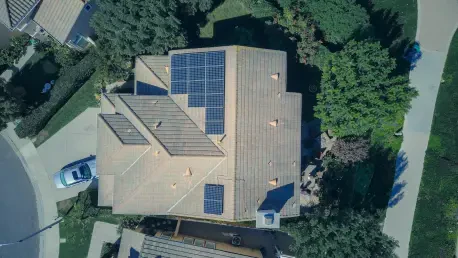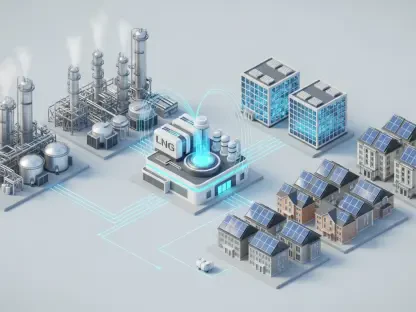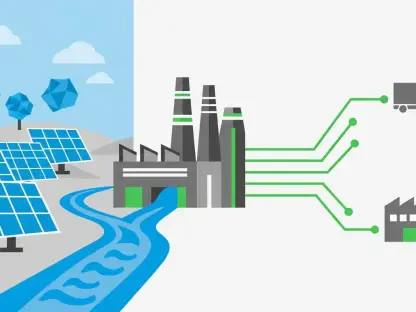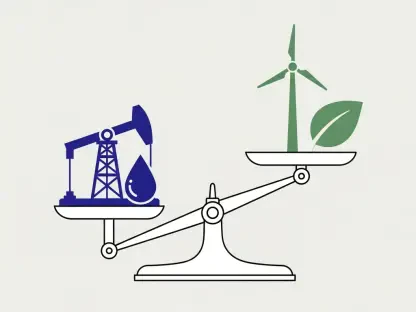Introduction to Puerto Rico’s Energy Transformation
In the wake of unimaginable destruction caused by Hurricane Maria in 2017, Puerto Rico faced a stark reality: an energy grid so fragile that it plunged the island into the longest blackout in American history, exposing a critical vulnerability in a centralized, aging infrastructure. This catastrophe prompted an urgent need for reinvention. The island’s response has been nothing short of revolutionary, transforming individual homes into vital components of a resilient power network through the innovative use of home batteries.
This shift from a traditional, fossil fuel-dependent system to a decentralized, renewable energy model marks a significant departure from conventional grid management. By integrating thousands of residential battery systems, Puerto Rico has tackled the challenge of reliability in a region prone to natural disasters. The core question emerges: how has this small island managed to convert personal energy storage into a collective grid asset?
The significance of this transformation extends beyond local borders, offering a potential blueprint for other regions grappling with similar climate and infrastructure issues. Puerto Rico’s journey showcases a bold experiment in energy resilience, inviting curiosity about the mechanisms behind this pioneering approach.
Background and Importance of the Energy Shift
Hurricane Maria’s devastation in 2017 left Puerto Rico’s grid in ruins, with millions enduring months without power, highlighting the dire state of an outdated system reliant on imported fossil fuels. The disaster catalyzed a profound rethinking of energy policy, pushing the island to address systemic weaknesses that had been ignored for decades. This historical turning point underscored the urgent need for a robust, sustainable alternative to prevent future crises of such magnitude.
In response, Act 17 of 2019 set an ambitious target of achieving 100% renewable energy by 2050, a legislative commitment to overhaul the energy sector by prioritizing solar and other clean sources. This policy not only restructured the separation of power generation from transmission and distribution but also paved the way for private partnerships, such as LUMA Energy’s involvement since 2021, to modernize operations. Such measures reflect a strategic vision to build an infrastructure capable of withstanding environmental challenges.
Globally, Puerto Rico’s efforts hold relevance as a case study for regions facing the dual threats of climate change and aging grids. The island’s proactive embrace of distributed energy resources offers valuable lessons in sustainability and resilience, positioning it as a model for innovative grid solutions in vulnerable areas worldwide.
Research Methodology, Findings, and Implications
Methodology
To understand Puerto Rico’s energy initiatives, a comprehensive analysis was conducted by reviewing policy documents, news articles, and operational data from LUMA Energy’s Customer Battery Energy Sharing (CBES) program. This approach ensured a well-rounded perspective on both the technical and societal aspects of the transformation. Emphasis was placed on credible sources to maintain accuracy in assessing the program’s scope and impact.
Collaboration with stakeholders, including Resource Innovations, provided critical insights into the design and execution of CBES, alongside access to real-time data tracking of battery dispatch events. These partnerships helped illuminate the practical challenges and solutions encountered during implementation. The methodology balanced qualitative feedback from community participants with quantitative metrics to gauge the program’s effectiveness.
Key metrics analyzed included participation rates among households, energy contributions during peak demand periods, and overall grid stability improvements. This dual focus allowed for a nuanced evaluation of how individual actions aggregate into broader systemic benefits, painting a detailed picture of the initiative’s operational dynamics.
Findings
The analysis revealed a remarkable surge in rooftop solar and home battery adoption, with Puerto Rico surpassing all other U.S. regions in per capita usage. Over 10% of the island’s electricity now comes from solar, a figure projected to climb significantly in the coming years. This rapid growth underscores a cultural and economic shift toward renewable energy as a household norm.
The CBES program stands out as a cornerstone of this progress, aggregating over 81,000 customers’ batteries into a virtual power plant (VPP). During critical demand response events, such as a summer shortfall, these batteries supplied 48 MW of electricity, averting potential outages. Such tangible outcomes highlight the program’s capacity to act as a reliable grid support mechanism.
Community engagement has been exceptionally high, with an 82% participation rate among enrolled households, bolstered by financial incentives of up to $600 per battery. This enthusiastic response illustrates a willingness to contribute to collective energy security, transforming passive consumers into active grid partners through accessible participation models.
Implications
The CBES program significantly enhances grid stability by reducing dependence on expensive, polluting peaker plants, thereby lowering operational costs and environmental impact. By integrating distributed resources, the initiative helps prevent blackouts during high-demand periods, ensuring a more consistent power supply. This shift represents a practical solution to long-standing reliability issues.
On a societal level, the program fosters equity by empowering communities to play a direct role in energy management, with inclusive options for those unable to afford personal batteries through financing or lease arrangements. This democratization of energy roles promotes a sense of ownership and responsibility among residents, bridging economic disparities in access to modern energy solutions.
Scalability emerges as a key takeaway, evidenced by LUMA’s transition of CBES into a permanent program following its successful pilot phase. This evolution suggests that similar VPP models could be adapted elsewhere, provided local regulatory and infrastructural contexts are considered, offering a replicable framework for global energy transitions.
Reflection and Future Directions
Reflection
Managing a decentralized grid with variable energy inputs poses significant challenges, including the unpredictability of solar generation and battery availability. LUMA tackled these issues through sophisticated VPP strategies, optimizing real-time dispatch to balance supply and demand. Such innovations reflect a forward-thinking approach to overcoming the inherent complexities of distributed systems.
However, limitations persist, particularly in securing sustained regulatory support and fostering cultural acceptance of new energy-sharing norms. Continuous education and policy adjustments are necessary to maintain community involvement over the long term. These hurdles highlight the importance of adaptive governance in sustaining such programs.
Partnerships proved instrumental in navigating technical and logistical obstacles during the CBES pilot, with collaborations ensuring seamless integration of diverse systems. The success of these alliances demonstrates the value of collective expertise in addressing multifaceted energy challenges, setting a precedent for future initiatives.
Future Directions
Further exploration is needed to adapt Puerto Rico’s model to varied regional contexts, where differing regulatory frameworks and economic conditions might influence outcomes. Comparative studies could identify best practices for tailoring VPP programs to unique local needs. This research would help refine strategies for broader application across diverse geographies.
Investigating advanced technologies for real-time battery dispatch and deeper integration with other distributed energy resources, such as wind or microgrids, could enhance efficiency. Developing smarter algorithms and connectivity solutions might unlock additional grid benefits. Such technological advancements warrant focused attention in upcoming studies.
Long-term impacts of community-driven grid programs on energy equity and renewable adoption rates also merit in-depth analysis. Understanding how these initiatives shape social attitudes and economic behaviors over extended periods could inform policies that maximize participation. This area of inquiry promises to yield insights into sustainable energy cultures.
Conclusion: A Model for the Future
Puerto Rico’s journey from the devastation of Hurricane Maria to a beacon of energy innovation stands as a testament to the power of resilience and ingenuity. The CBES program, by harnessing home batteries into a cohesive virtual power plant, redefined grid reliability and community involvement in a way few could have predicted. This transformation marked a significant milestone in the pursuit of sustainable energy solutions.
Looking ahead, actionable steps include fostering international collaborations to share lessons learned, ensuring that other vulnerable regions can adapt this framework to their specific challenges. Investing in technology to streamline battery integration and expanding outreach to maintain community trust emerge as critical priorities. These efforts aim to solidify the foundation for a global movement toward cleaner, more dependable energy systems.
Additionally, policymakers and utilities worldwide are encouraged to prioritize pilot programs inspired by this model, testing localized versions while addressing regulatory barriers. By building on Puerto Rico’s experience, a collective push toward integrating distributed resources could reshape energy landscapes, ensuring that resilience and equity remain at the forefront of future innovations.









